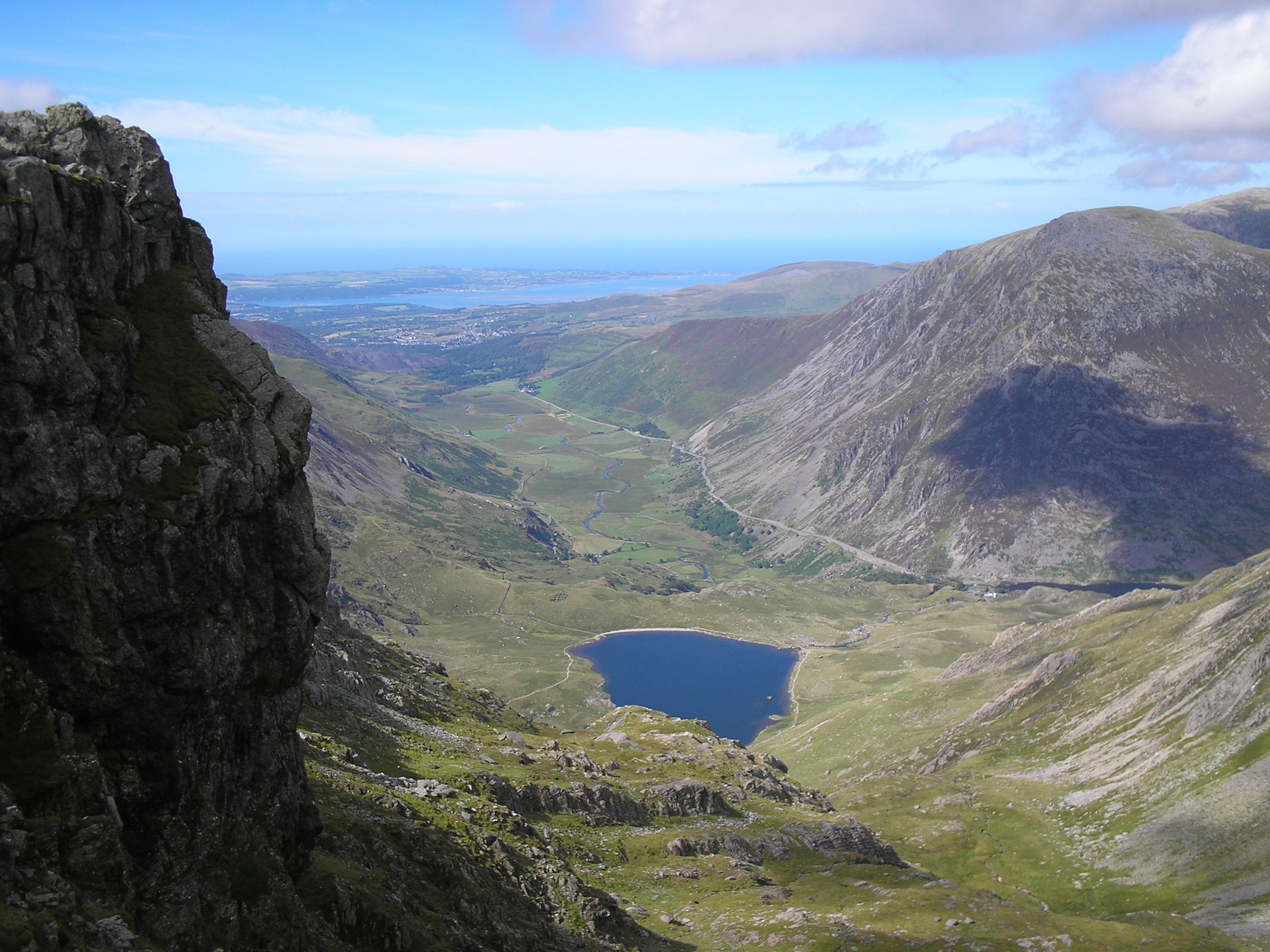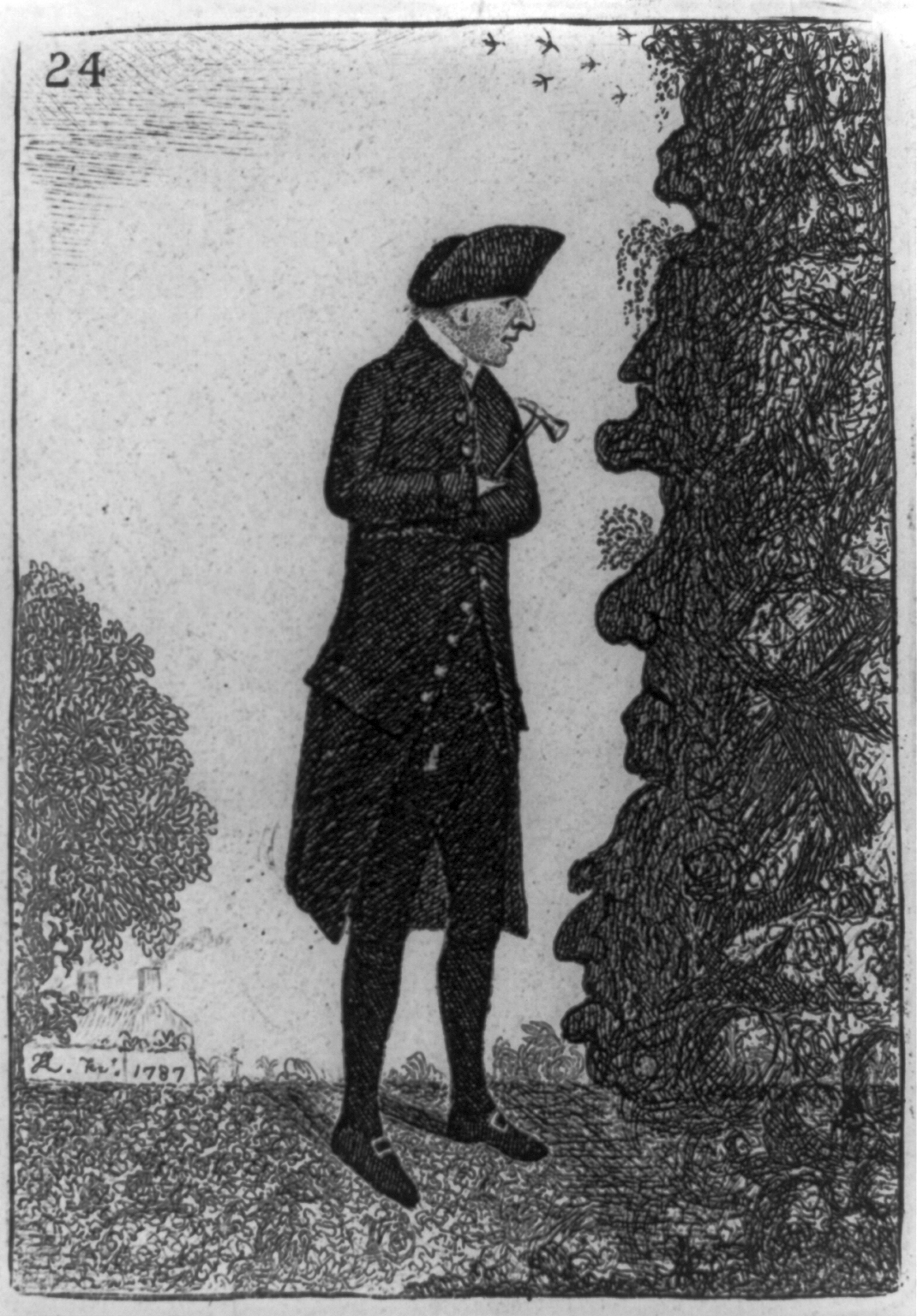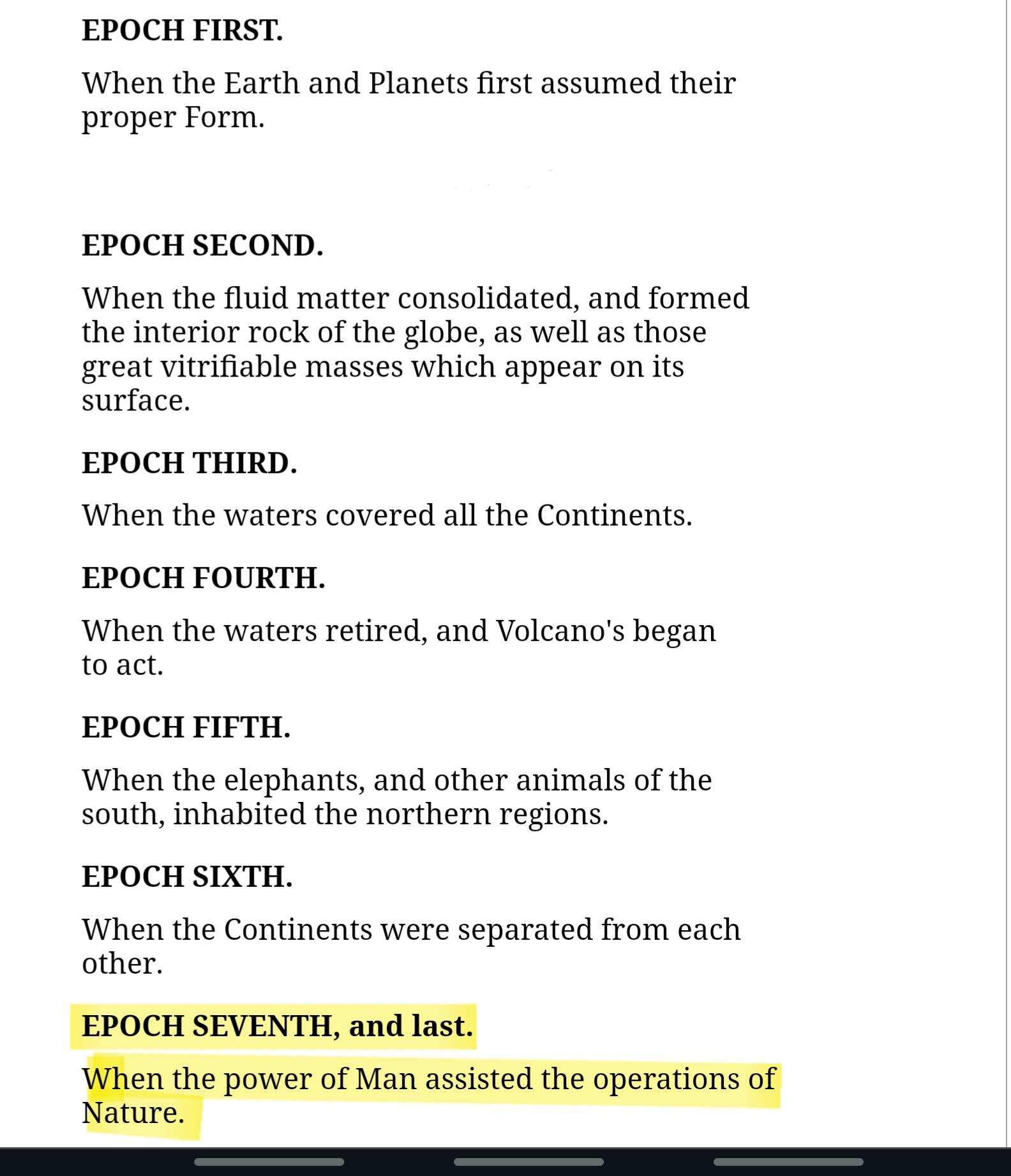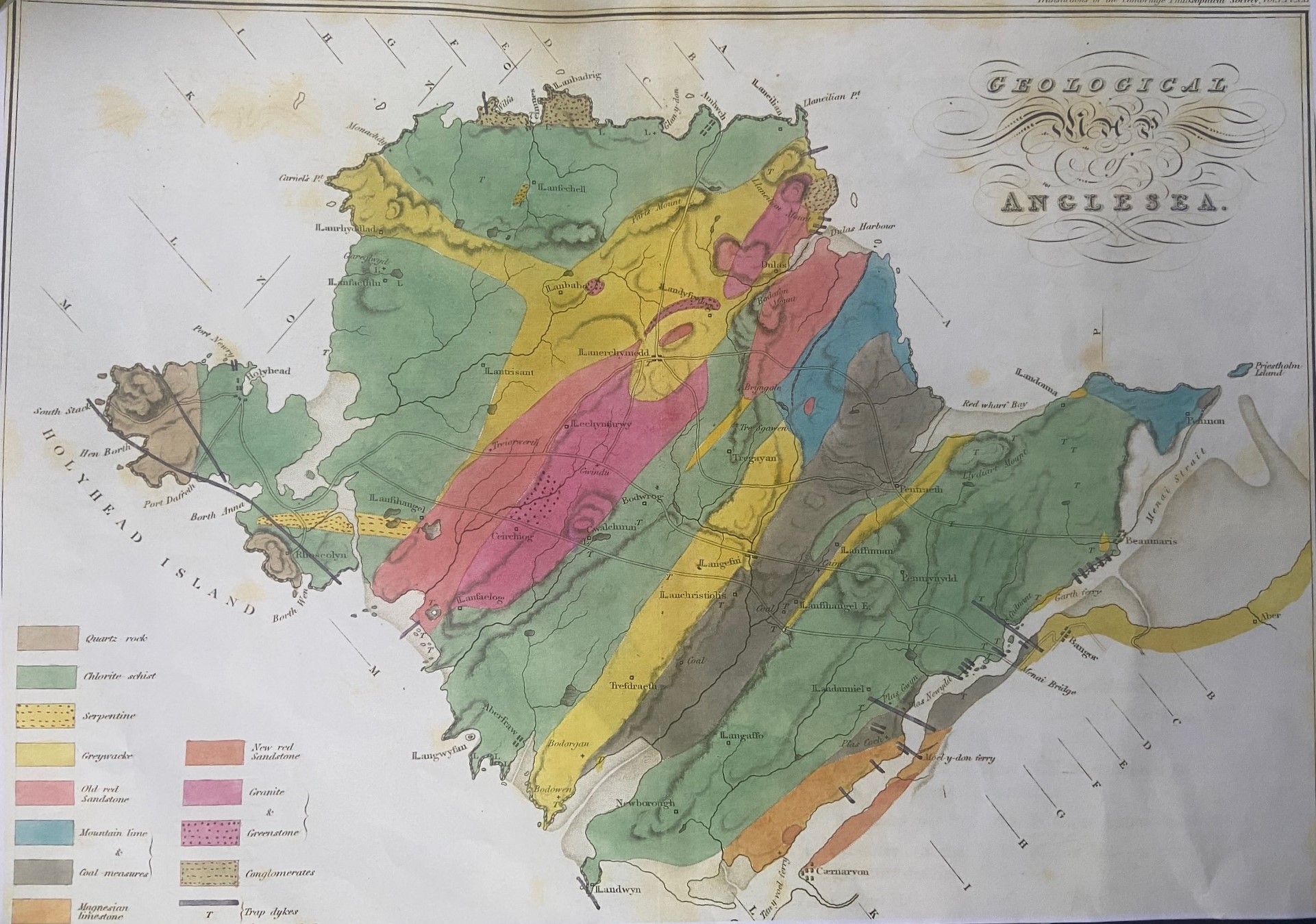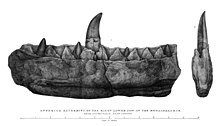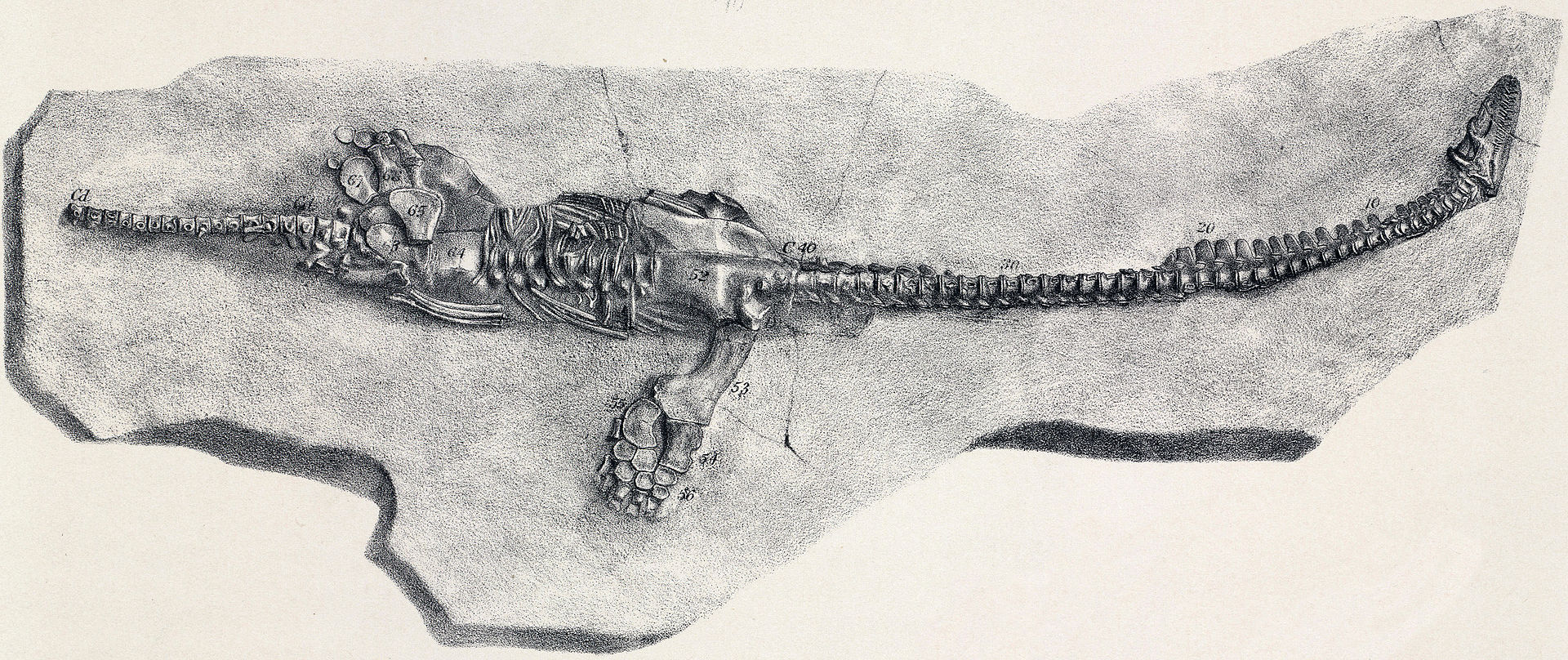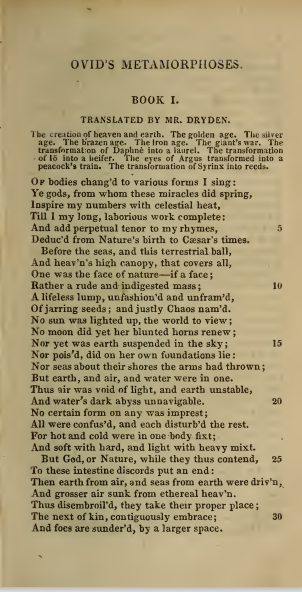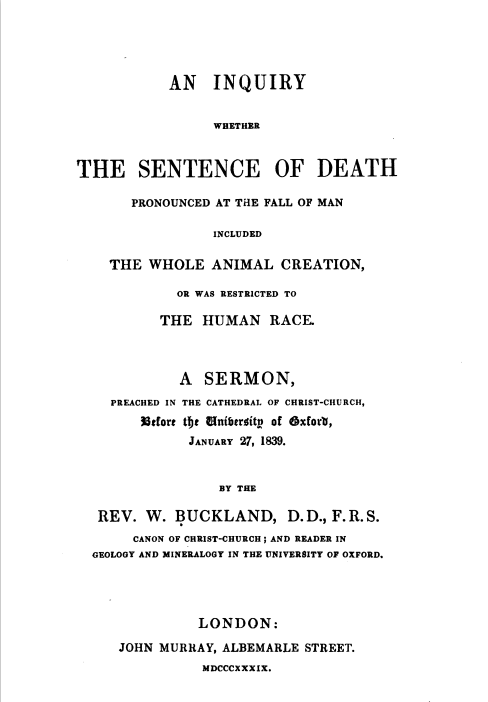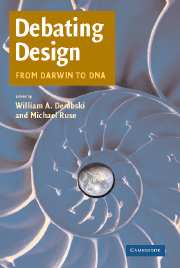In 2004 this book was published based on an Intelligent Design conference in Wisconsin in 2000. There were a mixture of speakers for and against and I was one of them.
The book Debating by Design ed by Ruse and Dembski was published in 2004. There was a spread of chapters and my lecture (revised) was included in the section of Theistic Evolution, entitled “ID, some geological,historical and theological questions”..
I described ID as punctuated naturalism as as ID seems to accept that God let much of nature progress its own sweet way and interrupted at times so Behe et al can say “this is designed” and the rest isn’t!
The book incuded chapters by many well-known ID proponents – Steve Meyer, Behe, Dembski, Menuge and classic evilutionists! – Ken Miller, Ayala, Sober and pennock
Massimo Pigliucci reviewed it for Evolution. He didn’t support the arguments for ID, which will come as a surprise to no one . He thought the essays on theistic evolution were irrelevant except for one which gave historical background (i.e Paley) and the geological perspective. Four of the writers of this section were Haught, Polkinghorne, Ward and Swinburne!!
Recently the twentieth anniversary of publication has been noted by Evolution News from the DIscovery Institute
https://evolutionnews.org/2024/01/dembski-and-ruse-look-back-on-20-years-of-debate-and-a-special-anniversary/?fbclid=IwAR3mI-X4mHDy_pdfp5bqzchmftL9v4gaQjGtDT0T4KqCYMgtAhxbGq2UtDk
Whole book
https://ia600409.us.archive.org/7/items/Debating.Design.From.Darwin.To.DNA/William%20Dembski%20-%20Debating%20Design%20-%20From%20Darwin%20to%20DNA.pdf
My chapter is INTELLIGENT DESIGN; SOME GEOLOGICAL, HISTORICAL AND THEOLOGICAL QUESTIONS. and I look at the question of ID, not from a design perspective but over geological time. I consider that the design of Paley fell on the rise of geological time with new life forms appearing at intervals. If we deny evolution then the fossil record can only be explained by God popping back at intervals to create a new model for the next few million years. You can read the whole chapter here;
DebatingdesignRobertschapter
You can read the whole chapter by opening the link, but here are extracts;
****
The Design Argument evokes William Paley walking on a Cumbrian moorland and discovering a watch. In the windswept silence he developed his Watchmaker analogy of an intelligent designer, and thus Intelligent Design may be considered as the restatement of the old argument refuted by Charles Darwin. There are similarities but also important differences between the old Design Arguments of Paley, William Buckland and even John Ray and those of Behe, Dembski and other proponents of Intelligent Design. To make a valid comparison, it is essential to consider the content and context of Design, old and new, the relationship of both to geological time, biological evolution, naturalism (or secondary causes) and a “theological approach” to science. My major concern is the refusal of Design Theorists to take sufficient cognisance of the vastness of geological time. Secondly I show that historically scientists cannot simply be type–cast as “theistic” or “naturalist” as both some design theorists and critics imply. Thirdly I show that Intelligent Design is more an argument from rhetoric than science, and lastly I seek to demonstrate difference between Intelligent Design and the 19th century design arguments and how Intelligent Design is very different from Paley’s.
………..
The development of the Design Argument in the 18th century culminated in William Paley’s Natural Theology (1802) and William Buckland’s Bridgewater Treatise in 1836. Paley and Buckland emphasised the perfection of mechanical structures,
The Implication of geological time and the fossil succession for Intelligent Design.
Most concerning to a geologist is the near absence of reference to geological time in studies on Intelligent Design. It is as if the origin of species, whether by direct intervention or by evolution, can be discussed without reference to Deep Time, or to the succession of life. As Nancy Pearcey wrote, ‘For too long, opponents of naturalistic evolution have let themselves be divided and conquered over subsidiary issues like the age of the earth’.[6] Like Pearcey, who is a Young Earth Creationist, most intelligent designers simply ignore issues of age as irrelevant. The issue of the succession of life through the 4.6 billion years of time clearly has an effect on how one will conceive how any life form will have come into being. If the aeons of geological time are correct, and Pearcy, Nelson and Wise consider that to be wrong, then lifeforms have appeared during time and have gradually changed either through an outside force or naturally. If the earth is only 10,000 years old, then there is insufficient time for changes through natural means and thus it is reasonable to hold the abrupt appearance of species so poetically expressed by Milton;
The grassy clods now calved, now half appeared
The tawny lion, pawing to get free
His hinder parts, then springs as broke from bonds,
And rampant shakes his brinded mane;
Paradise Lost; Book VII, l463-6.
The Problem of Geological Time for Design.
In his Natural Theology William Paley discussed the design of biological structures. However in 1800 little was known of the succession of life as the geological column had not been worked out, so that Paley could not have attempted to consider “creation” over geological time. As the geological column was elucidated, by 1820 a Progressive Creation over millions of years was seen as the most reasonable explanation, and inevitable from the fossil record, though Uniformitarians like Lyell rejected progressivism. This meant that instead of a few creative acts in the Six Days of Reconstitution,[7] there had been innumerable creative acts during the vastness of geological time. Thus the French geologist Alcide d’Orbigny’ (1850s) ‘recognised 27 successive fossil faunas in one part of the geological column (part of the Jurassic at Arromanches in Normandy) each of which he believed became entirely extinct as the next was created …’[8] This was used to justify his concept of a Geological Stage, which is still accepted though shorn of its creationist roots. If d’Orbigny were correct and that part of the Jurassic was 10 million years, then at the same rate of creation there would some have been some 1500 creations since the beginning of the Cambrian.[9]
This raised severe questions. Why did God create/design a succession of forms differing only slightly from previous forms? Why was extinction allowed?
Assuming evolution has not occurred, then the Designer returned at regular intervals to modify a previous creation as a motor manufacturer gives an annual revamp to their models.
……
The Young Darwin on a non–evolutionary succession of life.
Phillips was a lifelong opponent of evolution, but Darwin made a fascinating use of Phillips’s ideas, while toying with evolution in his B notebook of 1837-8.[11] This was nine months before he read Malthus and thus predates Natural Selection. Darwin agreed with Phillips’ historical order of fossils, but not his successive creations. In B notebook we see Darwin the GEOLOGIST arguing historically and abductively for evolution.
……….
Miller in Finding Darwin’s God[15] mischievously considers design in relation to elephants with 22 species in the last 6 million years and many more going back to the Eocene. If all were “formed” at about the same time in c8000 BC, then the only reasonable explanation is some kind of intelligent intervention, which designed each to be different, rather like cars made by Chrysler or GM over several decades.
If geological timescale be correct, then these different fossil elephants appeared consecutively and despite “gaps” form a graded sequence. They indicate only “annual model upgrade”. Assuming that this is a fairly complete sequence, the Intelligent Designer seemed to have adopted the same sequence of modifications as would be expected by evolution. This is exactly the point Darwin made in his 1844 draft;
I must premise that, according to the view ordinarily received, the myriads of organisms, which have during past and present times peopled this world, have been created by so many distinct acts of creation. … That all the organisms of this world have been produced on a scheme is certain from their general affinities; and if this scheme can be shown to be the same with that which would result from allied organic beings descending from common stocks, it becomes highly improbable that they have been separately created by individual acts of the will of a Creator. For as well might it be said that, although the planets move in courses conformably to the law of gravity, yet we ought to attribute the course of each planet to the individual act of the will of the Creator.[16]
The Playing down of geological time in Intelligent Design
The example from Miller highlights why the avoidance of geological time results in problems. Behe focuses entirely on biochemistry and Dembski on detecting design. Both accept a long timescale but do not consider the implications for their understanding of Design. Thus the formation of biological complexity is considered without any reference to the history of life and its timescale in a way which is reminiscent of Lessing’s ditch in that “accidental truths of history can never become the proof of necessary truths of reason.”[17] The accidental truths of geology are simply ignored for the demonstration of Intelligent Design. In the volume The Creation Hypothesis Stephen Meyer argued cogently for The Methodological Equivalence of Design and Descent, but swung the argument in favour of design by omitting any reference to geological time. If geological time is accepted then the choice is between Phillips (design or multiple abrupt appearance) and Darwin (descent), as discussed above.
………
Unless one rejects geological time, the fossil record points either to Progressive Creation with regular divine interventions (the common pre-Darwinian view), or evolution, possibly with occasional “interventions”. The starting point has to be an ancient earth and the ‘absolute knowledge that species die & others replace them’. To regard geological time as a subsidiary issue would deny that.
Design, Theistic Science and Naturalism, a historical perspective from 1690 to 1900.
Whereas Johnson, Behe and Dembski often present the case for Intelligent Design without reference to theology, Plantinga and Moreland stress the need for theistic science, whereby theology almost becomes part of science. Theistic Science is open to the direct activity of God, whereby these acts are demonstrated on theological grounds. Thus J. P. Moreland itemises ‘libertarian, miraculous acts of God’ being ‘the beginning of the universe, the direct creation of first life and the various kinds of life, the direct creation of human beings in the Middle East, the flood of Noah” and “for some, the geological column’[21] and the Crossing of the Red Sea[22]. This has great appeal to those who wish to stress the supernatural nature of Christian Belief.
Diluvial or Flood geology; theistic or naturalistic?
John Ray and Edward Lhwyd
With the apparently Christian origin of science in the 17th century it is tempting to see science as moving from a theistic base to a naturalistic one over two centuries. This appears to be so in consideration of the formation of life and also the Flood as the cause of strata. Thus the Flood may be seen as an example of divine intervention and invoked from the 17th to the early 19th century. Because the 17th century Theorists of the Earth wrote so biblically of Creation, Flood and Conflagration their espousal of a kind of naturalism or “secondary causes” is overlooked. S.J.Gould expounds this, writing, ‘Burnet’s primary concern was to render earth history not by miracles, but by natural physical processes.’[23] Gould described Burnet as a ‘rationalist’; Johnson would call him a Naturalist. A similar willingness to explain geological features by natural processes is found in Ray’s discussion of erratic blocks[24] in the second edition of Miscellaneous Discourses concerning the dissolution of the world.[25] Ray was writing in response to a letter from Edward Lhwyd, who wrote to Ray on 30 February 1691, ‘Upon the reading on your discourse of the rains continually washing away and carrying down earth from the mountains, it puts me in mind…which I observed’, and then described what he had observed in Snowdonia. He described innumerable boulders which had “fallen” into the Llanberis and Nant Ffrancon valleys, which are two U-shaped glacial valleys. (Most of these rocks are erratics deposited by retreating glaciers.) As ‘there are but two or three that have fallen in the memory of any man now living, in the ordinary course of nature we shall be compelled to allow the rest many thousands of years more than the age of the world.’[26]

Erratic blocks in Nant Peris below Cwm Glas
Lhwyd was reluctant to ascribe them to the Deluge and Ray commented evasively on Lhwyd’s findings to avoid facing the logic of Lhwyd’s comments.[27] On geological time Ray nailed his colours firmly to the fence, without explicitly rejecting an Ussher chronology. His evasiveness to Lhwyd shows that he was reluctant to posit a divine intervention at the Deluge. Ray equivocated between a naturalistic and a supernatural explanation.
Early 19th Century Geologists
Moving on to the 1820s, let us consider the clerical geologists Henslow, Sedgwick, Buckland and Conybeare, who contributed so much to geology; – Henslow on Anglesey[28], who influenced Darwin’s geology far more than Lyell, Sedgwick who elucidated the Cambrian and taught Darwin, Buckland for the first Mesozoic mammal and introducing Ice Ages to Britain and Conybeare on the Ichthyosaur. Cannon, in a classic article, claimed that they were Broadchurchmen,[29] i.e. proto-modernist, but Pennock portrayed Henslow and Sedgwick as ardent adherents of ‘the detailed hypotheses of catastrophist flood geology’,[30] which they allegedly taught Darwin. (ed. They didn’t and a future paper of mine will show what they taught him, but that probably won’t surface until 2025) Thus Henslow and Sedgwick were supernaturalist. Both cannot be right. Pennock has presented a simplistic either/or; either to be totally naturalistic like Darwin (possibly) became, or misguidedly basing one’s science on theology as did(n’t) Sedgwick and Henslow. It is a simple thesis, which misunderstands Sedgwick’s and Henslow’s geological method. Ironically Pennock’s polarisation is almost identical to Johnson’s, which he so effectively demolished in The Tower of Babel, where he distinguishes between ontological and methodological naturalism. As geologists, Henslow and Sedgwick were methodological naturalists, which becomes manifest when one studies their geology in the field in North Wales. They did not base their geology on ‘the detailed hypotheses of catastrophist flood geology’. Sedgwick’s geological work was straightforward stratigraphy of England from 1820 to 1831. After his so-called recantation in 1831 he started on Wales without change to his practice or theory in his fieldnotes or published papers. In 1825 he contributed a paper on the Origins of Alluvial and Diluvial Formations[31] which contained much good information on the “drift”, later seen as glacial. He realised that it had come from the north. He considered these ‘to demonstrate the reality of a great diluvian catastrophe during a comparatively recent period’ and that ‘It must … be rash and unphilosophical to look to the language of revelation for any direct proofs of the truths of physical science.’ In fact this is a short step from the Ice Age. Henslow wrote a short paper in 1822[32] in which he proposed that a passing comet caused the Flood. Here Henslow is re-iterating the naturalistic approach of Whiston 150 years earlier, where “Biblical Events” were explained by natural/secondary causes, and thus not libertarian acts of God. At about the same time Henslow mapped and described the geology of Anglesey. His memoir, which had such a great and unrecognised influence on Darwin’s geology,[33] is a superb pioneering work on Pre–Cambrian geology and contains no theology.
In contrast William Buckland at times called in divine agency to explain matters geological. However in his reconciliation of Christianity and geology in both Vindiciae Geologicae (1820) and Reliquiae Diluvianiae (1823) he explained geological phenomena in a naturalistic way without invoking God. Privately he invoked God for some libertarian interventions. In some (illegible) notes on the Deluge made in the early 1820s,[34] he grappled with the Deluge and geology and thought God may have recreated all life throughout the world after the flood waters as there no room in the ark, as well as contemplating a local Flood. Perhaps it is significant that Buckland’s public face was naturalistic, but in private considered divine intervention. That is the opposite of expectations, but does show that a leading geologist could be open to supernatural intervention in the 1820s. In the 1840s Buckland still regarded the Flood as a geological event but one caused by the Ice Age. In 1842 he wrote, that icebergs had been carried from the north by ‘a great diluvial wave or current’[35] reminiscent of Sedgwick in 1825
The Flood Geology and Diluvialism of the early 19th century had far more in common with Ryan and Pitman[36] on the Black Sea, than the divine hydraulics of Morris and Whitcomb[37]. Though Diluvialists like Conybeare regarded Uniformitarians, such as Scrope and Fleming (a Calvinist evangelical), as geese and donkeys, they were equally naturalistic in their geology. (It is probably better to say methodologically uniformitarian.[38])
From 1820 to 1860 one cannot divide geologists into Naturalists and Theists.[39] Many, Sedgwick, Buckland, Lyell (until 1864) etc., etc. were Naturalist and non–interventionist in geology and Theist and interventionist in their interpretation of the Fossil Record. Geological revolutions were natural but the creation of species was supernatural. This may be an inconsistent approach to the history of the earth and the life. The problems were well–known as from 1820 to 1860, many scientists were questioning the fixity of species The common view of Progressive Creationism was an unstable amalgam of supernaturalism and naturalism.
Darwin on ‘the ordinary view of Creation’.
Throughout the Origin of Species Darwin referred to ‘the ordinary view of creation’ and cited its weaknesses to make his ideas plausible. The rhetorical value of ‘the ordinary view of creation’ is discussed below, but its power was its lack of definition. Readers today will think of A Six Day Creation and that may have been Darwin’s intention, though Six-Day Creationism had virtually disappeared by 1855.[40] The ‘ordinary view of creation’ was, in fact, Progressive Creation, which was emphatic on geological time and the succession of life but frankly confused over the fixity of species, or how “vestigial organs” were designed. Darwin easily pointed out contradictions with devastating effect.
This he did in asking whether ‘species have been created at one or more points of the earth’s surface’ (352) He pointed out that geologists will find no difficulty for migration as, for example, when Britain was joined to the European mainland some millennia ago. And then he asked, ‘But if the same species can be produced at two separate points, why do we not find a single mammal common to Europe and Australia or South America?’ The implications he spelt out in detail comparing the Cape Verde Islands fauna with the Galapagos. The one flora and fauna was similar to Africa and the other South America, yet their climates and landscape were almost identical. His conclusion was that ‘this grand fact can receive no sort of explanation on the ordinary view of independent creation’. (398) He took this up again in the last chapter on naturalists ‘admit variation as a vera causa in one case, they arbitrarily reject it in another’ And then asked, with Miltonic undertones, ‘But do they really believe that at innumerable periods of the earth’s history certain elemental atoms have been commanded suddenly to flash into living tissues?’ (482)
…………
‘Theism’ and ‘Naturalism’ from the mid 19th Century
Yet Darwin retained some of ‘the ordinary view of creation’ for the initial Creation and the creation of life, virtually as libertarian acts of God. This enabled many Christians to accept his ideas, though often rejecting Natural Selection. Some added the creation of consciousness and of man as two more, whether they were Christian or not, for example, A. R. Wallace, the Scottish theologian James Orr and the American G. F. Wright.
Orr was a conservative Scottish Presbyterian whose Kerr Lectures for 1890-1 are significant. He discussed evolution in his lecture on The theistic postulate of the Christian view. He said, ‘On the general hypothesis of evolution,…, I have nothing to say, except that, within certain limits, it seems to me extremely probable, and supported by a large body of evidence’. What comes next has a most contemporary ring, ‘On this subject two views may be held. The first is, that evolution results from development from within, in which case, obviously, the argument from design stands precisely where it did, except that the sphere of its application is enormously extended. The second view is, that evolution has resulted from fortuitous variations …’[42] Clearly Orr rejects pure chance. His discussion of evolution is highly informed and he almost held a form of Punctuated Equilibrium as ‘The type persists through the ages practically unchanged. At other periods … there seems to be a breaking down of this fixity. The history of life is marked by a great inrush of new forms. …it in no way conflicts with design.’
But Orr wishes to go beyond Design; ‘The chief criticism … upon the design argument, …, is that it is too narrow. It confines the argument to final causes – … it is not the marks of purpose alone which necessitate this inference (of God) but everything which bespeaks of order, plan, arrangement, harmony, beauty, rationality in the connection and system of things.’ We are now back to Calvin, ‘the elegant structure of the world serving as a kind of a mirror, in which we may behold God, though otherwise invisible.’ and to Polkinghornes’ ‘inbuilt potentiality of creation’.
Orr seems to hover between van Till’s “creatonomic” view and Behe’s occasional interventions. Orr’s criticism that Design as understood in the early 19th Century is too narrow ought to be recognised. In a sense these writers were intermediate forms between theistic scientists and methodological naturalists, and thus do not fall into Pennock’s or Johnson’s simplistic categories. They also give the lie to the claim that Darwin killed Design.
Many years ago in his important study, Hooykaas[43] attempted to categorise the different approaches as Atheism, Deism, Semi–Deism, Supranaturalism and the Biblical view. Deism allowed no divine involvement after the initial creation, supranaturalism could imply capricious divine involvement, semi–deism the occasional interruption and the Biblical view stressed God’s involvement in Creation at all times. By Hooykaas’s delineation ‘the ordinary view of creation’ of Buckland and others, and Intelligent Design is Semi–Deism, or what van Till calls Punctuated Naturalism. It is an unstable position between deism (or even atheism) and supranaturalism. Hooykaas scarcely develops his “Biblical View” of which he writes: ‘In his providence, God usually guides the world according to constant rules, but, as He is a free agent, He gives order as well as deviation from order.’ This opens up the question of miracles as any creed which accepts the Virgin Birth or the Empty Tomb of the Resurrection must, in a sense, be super– or possibly supra– naturalist in the eyes of thorough–going naturalists. As with Griffin’s supernaturalism and minimal naturalism[44] it is difficult to draw the line.
To summarise; it is not possible to make a neat distinction of theistic and naturalistic science, especially when we consider historical examples. Both Pennock and Johnson oversimplify matters to fit into their respective rhetorical schemes. One must give Darwin the last word. He was never totally consistent in his naturalism and always said of himself, ‘I am in a hopeless muddle.’
A Restatement of Fact; rhetoric rather than argument in Design.
Rhetoric is an ambivalent term, but has been an essential feature of design arguments in the 19th century and in Intelligent Design. It may be considered as the persuasiveness of a lawyer where the argument is weak, but Phillip Johnson and Charles Lyell are not my concern! In their recent Gifford Lectures Brooke and Cantor discuss Natural Theology as Rhetoric and expound several examples from the 18th and 19th centuries including Buckland on Megatherium. They point out, “(I)t is important to re-emphasise that natural theologians did not deploy such evidence (from Design) to ‘prove’ (in the strong deductive sense) the existence and attributes of God.” The Design argument was an inductive argument and its conclusion was deemed a ‘moral’ truth. They cite Campbell, a contemporary writer, “In moral reasoning we ascend from possibility … to probability … to the summit of moral certainty.” They suggest “the persuasiveness of arguments suggest a close similarity between natural theology and the proceedings of the courtroom.” “Persuasion becomes the name of the game.”[45]
Rhetoric in Buckland
Considered in this light the Design Argument as employed by both Buckland and IDCs becomes a rhetorical argument with shades of a persuasive advocate. The rhetoric gives Design both its strength and its fatal flaw. This highly charged courtroom atmosphere was present in the Music Rooms at Holywell in 1832 when Buckland gave his tour de force on megatherium,[46] whom he christened Old Scratch.

Buckland gave a superb scientific account of its peculiar anatomy, but throughout the lecture was the implicit message, “the adaptation of Old Scratch is so wonderful and demonstrates the skill of the Designer, who is none but the Father of our Lord Jesus Christ.” Buckland began with the possibility that sloths were not as poorly designed as Buffon and Cuvier claimed. As he described Old Scratch so favourably he moved to probability and then to the moral certainty of his theistic conclusion. This worked as Buckland gave an explanation of every part of its anatomy, but did not describe vestigial organs. In The Origin of Species Darwin picked up this flaw in Design arguments and how this was swept under the carpet by appeals to the Divine Plan. He wrote, “rudimentary organs are generally said to have been created ‘for the sake of symmetry’, or in order ‘to complete the scheme of nature;’ but this seems to me no explanation, merely a restatement of fact.” The fact being that God is the Creator.
Rhetoric in Behe
Behe also makes great use of rhetoric. Having led the reader through many explainable and unexplainable biochemical functions and the rhetorical appeal of his mousetrap, he uses an inductive rhetorical argument and argues that the absence of an explanation, as in the case of blood clotting, indicates the direct activity of a Designer. He rapidly moves from possibility to probability to moral certainty, but that certainty is only certain until an explanation is found. Behe’s mousetrap is a rhetorical flourish and his conclusion of a Designer is only a “restatement of fact” based on his original argument.
Darwin on the rhetoric in design and creation
At the end of The Origin of Species Darwin wrote, “It is so easy to hide our ignorance under such expressions as the ‘plan of creation’, ‘unity of design’ &c., and to think that we give an explanation when we only restate a fact.” To argue rhetorically surely Intelligent Design is a restatement of fact? We may also see argument by rhetoric in the work of Richard Dawkins, most notably with his computer-simulated evolving biomorphs in The Blind Watchmaker. Here the rhetoric is based on contemporary faith in computer simulation rather than God, but is ultimately no proof of evolution and likewise is “a restatement of fact”. Hard proof would require an actual sequence of evolving plants or animals.
In the Origin of Species Darwin used rhetoric to persuade readers of his case for ‘descent by modification’. His persuasiveness is to be seen in the cumulative effect of his ‘one long argument’ as he moves from the known fact of “artificial selection” to natural selection. Here he follows the approach of rhetoric recommended by Campbell. In places his rhetoric contains some ridicule. This ridicule is more pungent in his essays of the 1840s and in 1842 wrote, ‘The creationist tells one, on a … spot the American spirit of creation makes … American doves’.[47] His discussion of the three rhinoceroses of Java, Sumatra and Malacca argues rhetorically for rejecting separate origin. As these three ‘scarcely differ more than breeds of cattle’ how is it that ‘the creationist believes these three rhinoceroses were created (out of the dust of Java, Sumatra,…) with their deceptive appearance of true … relationship; as well can I believe the planets revolve … not from one law of gravity but from distinct volition of Creator.’[48] These pachyderms did not make it to the Origin of Species, but Darwin developed this argument as part of his conclusion. He wrote,’It is so easy to hide our ignorance under such expressions as the ‘plan of creation’, ‘unity of design’, etc., and to think we give an explanation when we only restate a fact.’ Darwin would say the same about ID today.
There is a parallel between Darwin’s and Dembski’s arguments. As Darwin moves from Artificial to Natural Selection, Dembski moves from intelligent causes in forensic science, cryptography and archaeology to intelligent causes in the natural world. He argues if we accept intelligent causes in the former, we ought to consider them ‘a legitimate domain for scientific investigation’ for the latter.[49] This has a considerable (rhetorical?) appeal but we must be clear how we can determine the intentional design of an Intelligent Designer or outside cause, beyond that of wonder and awe. That Dembski and others have failed to do.
The problem of designed and undesigned Creation in Intelligent Design.
Historical understandings of Genesis, creation and design
During the last half millennium the Genesis account of Creation has been variously understood. The dominant view during the 16th, 17th and 18th Centuries was the Chaos-Restitution interpretation, with an initial undefined period of Chaos, followed by a re-creation with several creative acts spread over six days.[50] A minority, following Archbishop Ussher, reduced the period of Chaos to twelve hours, thus confining the time for all creation to six days. This was later adopted by a minority in the early 19th century and YECs today, though it would be truer to say that YEC stems from the Seventh Day Adventists.[51]
……
Split level Creation in Intelligent Design
In their understanding of Creation IDCs open themselves to having a split-level understanding of Creation, as part designed and part not. Behe states that, “If a biological structure can be explained in terms of those natural laws, then we cannot conclude that it was designed.”[54] To take one of Behe’s examples haemoglobin is not designed, but blood-clotting is. This is in contrast to Design of Paley and Buckland where all is designed. Buckland took this to its extreme in his lecture on Megatherium, which as a sloth both Buffon and Cuvier thought was poorly designed. Buckland would have none of that and showed how such an apparently ill-designed beast was superbly designed ‘to dig potatoes’!
………..
They adopt reverse engineering[56], and where this accomplishes a reduction to unintelligent causes, as in the case of haemoglobin according to Behe, then that is NOT designed. Design is reserved only for those features, which cannot be explained by reverse engineering. By this they think they ensure a place for the creative activity of the Intelligent Designer – God. Our two advocates of reverse engineering; Buckland and Dennett would concur that ultimately a reason for any structure will be found. If the Intelligent Design argument is followed consistently the result is a two-tier Creation.
To put matters as baldly as possible.
Paley saw the demonstration of Design in explaining.
ID sees the demonstration of Design in not-explaining.
……..
Finally one should ask whether Design on its own is a biblical idea. I think not and consider that an over-emphasis on Design, (Paleyan or ID) pushes the concept beyond breaking point, as Orr stressed in 1890. The emphasis should be on God the Creator not God the Designer. If we follow the former and emphasise the Creator, we can say with Gerard Manley Hopkins;
The World is charged with the grandeur of God.
It will flame out, like shining from shook foil;
It gathers to a greatness, like the ooze of oil
Crushed. Why do men then now not reck his rod?
If we follow Intelligent Design, then we must parody Hopkins’ poem;
The clotting of blood is charged with the grandeur of God
It will ooze out, like shining from shook foil.
But haemoglobin is not charged with the grandeur of God.
We know not when to reck his rod.[57]
CONCLUSION
Design is but one of the “natural” arguments for God and in its classic form evolves from the Physico-theology of the 17th century. However, both in its classical form in Paley and in Intelligent Design, Design arguments have tended to avoid the issue of geological time. In Paley’s case this was because geological time and the succession of species was scarcely known. With Intelligent Design there is a deliberate strategy to avoid ‘subsidiary issues like the age of the earth’ – probably to retain the support of young earth creationists. It is essential to see the vast age of the earth and universe as a matter of “Rational Compulsion”, as opposed to Evolution which is an “inference to the best explanation”.[58] It is because an evolutionary perspective on the succession of life provided a better “inference to the best explanation” in the 1860s that the Progressive Creationism of Sedgwick, Phillips and others was rejected.
The appeal for a theistic science begs many questions. In the hands of Johnson it tends to posit two polarised models of science – materialist and empirical – which does not allow the diversity of opinion over science. This results in a game of Ping-Pong[59] forcing an extreme either/or. These models do not survive historical scrutiny whether we consider Ray, Sedgwick or Darwin himself. This Ping-Pong over ID is often used as a poor rhetorical device.
Finally here is Adam Sedgwick, after he supposedly gave up ‘the detailed hypotheses of catastrophist flood geology’ in 1831;
To the supreme Intelligence, indeed, all the complex and mutable combinations we behold, may be the necessary results of some simple law, regulating every material change, and involving within itself the very complications, which we, in our ignorance, regard as interruptions in the continuity of Nature’s work.[60]
That is a far better statement of the relevance of the classical theological understanding of Creation to science than the Punctuated Naturalism of Intelligent Design which inadvertently denies the involvement of the Creator in all creation.
[1] J. Calvin, Institutes, Book 1, Chapter 5, section 1.
[2] J. Calvin, Institutes, Book 1, Chapter 5, section 2.
[3] J. H. Brooke and G. Cantor Reconstructing Nature, 1998. Edinburgh: T & T Clark, 217
[4] H. Miller, The Testimony of the Rocks, 1858, London, 238–44
[5] F. Temple The Relations between Science and Religion, 1884 London:Longmans, p113
[6] N. Pearcey, Design and the Discriminating Public, Touchstone, July/Aug 1999, p26.
To my mind the error at Kansas was to omit the teaching of geology and the age of the earth in high school science. See Keith Miller, Perspectives on Science and Faith, 1999, vol 51, p220-1
[7] Reconstitution and not Creation as the dominant understanding of Genesis One, was that God first created Chaos and then after an undefined interval “reconstituted” it. M. B. Roberts, The Genesis of John Ray and his Successors, Evangelical Quarterly, April 2002, vol. LXXIV, 143–64.
[8] John Thackray The Age of the Earth 8
[9] This is a crude calculation based on some 27 creations every 10 m.y.; i.e.27×55 creations since the beginning of the Cambrian, i.e. a mere 1485 creations.
[10] J Phillips, Supplementary note in Baden Powell Connexion of Natural and Divine Truth, 1838, London p369. cited J.P.Smith The relation between the Holy Scripture and some parts of geological science, London, 1848, p60.
[11] Darwin, C.D., B notebook, (P.H.Barrett, P.J.Gautry, S. Herbert, D.Kohn & S.Smith, Charles Darwin’s Notebooks, 1836 – 1844, !987, Cambridge:Cambridge Univ Press.
[12] A Jurassic marsupial first described by Buckland in 1824.
[13] P. J. Bowler The Non–Darwinian Revolution, 1988, Baltimore: John Hopkins Press, passim
[14] P.Johnson, The Wedge, Touchstone, July/August 1999, p19-20.
[15] K. Miller, Finding Darwin’s God, 1999, New York: Harper Collins95–9
[16] C Darwin The Essay of 1844, Works of Charles Darwin, vol. 10, p133/4
[17] H Chadwick ed Lessing’s Theological Writings, 1956, London: A. & C. Black, 53
[18] Stephen Meyer, The Methodological Equivalence of Design and Descent, 67–112. K. Wise, The Origin of Life’s Major Groups, 211–34, p 226 in J.P.Moreland (ed), The Creation Hypothesis, 1994 Downers Grove: Inter Varsity Press.
[19] This is clear if one reads through the Transactions of the Geological Society of London and similar journals from 1810. Many of the papers are tedious stratigraphic and palaeontological descriptions substantiating Bragg’s charge that geology is stamp–collecting! But they show how undoctrinaire stratigraphy is, as it unravelled the chronology of the earth.
[20] N. Eldredge, The Triumph of Evolution, 2000, New York: W. H. Freeman, p42–8
[21] J.P.Moreland, The Creation Hypothesis, 1994 p51
in ed. W. Dembski, Mere Creation, 1998, Downers Grove: Inter Varsity Press, p265–88.
[22] Presumably Moreland would favour C. B. de Mille’s interpretation of the crossing of the Red Sea.
[23] S. J. Gould ‘Burnet’s Dirty Little Planet’ in Ever since Darwin 1980 Harmondsworth: Penguin, 144
[24] Erratic Blocks are boulders of various sizes which were transported up to 100 miles or more by ice during the Ice Ages and are found in the northern US, Britain and Northern Europe.
[25] John Ray, Miscellaneous Discourses concerning the dissolution of the world, 1691
[26] As there are at least 10,000 boulders in the Llanberis Pass and 60 years is the memory of any man, that gives an “age” of 10,000 x 20 = 200,000 years.
[27] Ray op. cit. ref 11, p285-289.
[28] J. S. Henslow, ‘Geological description of Anglesey’, Transactions of the Cambridge Philosophical Society, 1 (1822)
[29] W/S Cannon, “Scientists and Broadchurchmen”, 1964, Journal of British Studies 4:65–88
[30] R. T. Pennock, The Tower of Babel, 1999, Cambridge, Mass: MIT Press, p61.
[31] A.Sedgwick, Origins of Alluvial and Diluvial Formations, Annals of Philosophy 1825, cited from Clark and Hughes, Life and Letters of Adam Sedgwick,1890
[32] J. S. Henslow, “On the deluge”, 1823, Ann Phil, vi: 344–8
[33] See my A longer look at the Darwin–Sedgwick tour of North Wales 1831, forthcoming . I am preparing another paper on how Henslow, through his Anglesey memoir, influenced Darwin while on the Beagle – probably far more than Lyell.
[34] In the Deluge file at University Museum Oxford.
[35] W.Buckland, On the Glacia- diluvial Phaenomena in Snowdonia, Proc Geol Soc iii, 1842, p 579-84.
[36] W. Ryan and W. Pitman, Noah’s Flood, 1999, New York: Simon and Schuster.
[37] H. M. Morris and J. C. Whitcomb, The Genesis Flood, Nutley: Presbyterian and Reformed, 1961
[38] S. J. Gould, Time’s Arrow, Time’s Cycle, 1988, Harmondsworth: Penguin,
- Hooykaas, The Principle of Uniformity, Leiden: E. J. Brill, 1957
[39] I use the term Theist in the same way as Intelligent Designers today, to make my point.
[40] In Britain the only examples I can think of are Gosse and B.W.Newton. In the USA there were Moses Stuart, Dabney and a few others.
[41] W. Dembski, Intelligent Design,1999, Downers Grove: Inter Varsity Press 126
[42] J.Orr, The Christian View of God and the World, Edinburgh, 1897, p98ff.
[43] Hooykaas 170ff
[44] David Griffin, Religion and Scientific Naturalism (Albany, NY: SUNY Press, 2000).
[45] This is based very closely on Brooke, J & Cantor, G, Reconstructing Nature, Edinburgh, T & T Clark, 1998, p181-2.
[46] The manuscript of Buckland’s lecture is cited with permission from Mrs D. K. Harman.
- B. Roberts, Design up to Scratch, 1999 Perspectives on Science and Christian Faith, 51: 244–53.
[47] C Darwin The Essay of 1844, Works of Charles Darwin, vol. 10, p31. N.B. This was a rough draft, hence uncompleted sentences.
[48] Op cit p 49.
[49] Dembski p105
[50] M. B. Roberts, “The Genesis of John Ray and his successors”, Evangelical Quarterly, vol. LXXIV, no 2, (2002), p143–64.
[51] R. Numbers, The Creationists, 1991, New York: Knopf..
[52] This is a deliberate statement as Chalmers was NOT the originator of the Gap Theory. R. Kirwan, Geological Essays, London, 1799, 47.
[53] G. S. Faber, A Treatise of the Three Dispensations, London 1823, pp111–65.
[54] M.Behe, Darwin’s Black Box, 1996, New York: The Free Press, p203.
[55] H van Till in Denis Lamoureux ed Darwinism Defeated? 1999. “ The intelligent design concept as it has been promoted by Johnson, with its intense emphasis on episodes of form-imposing intervention and its frequent association of material processes with naturalistic causes, could be more accurately called a theory of punctuated naturalism.” (p. 88)
[56] D. C. Dennett, Darwin’s Dangerous Idea, 1995, Harmondsworth: Penguin.
[57] ‘rod’ used in the Authorised Version to mean ‘sceptre’, a symbol of God’s power (see Psalm 23 vs 4)
[58] Dembski, Intelligent Design, 1999, p195-8.
[59] B Mitchell, How to play theological ping-pong, 1987, London: Hodder and Stoughton, p166ff
[60] A Sedgwick, Anniversary Address to the Geological Society, 18 Feb 1831, Proc. Geol. Soc I(1834), 281–316; 302
d

